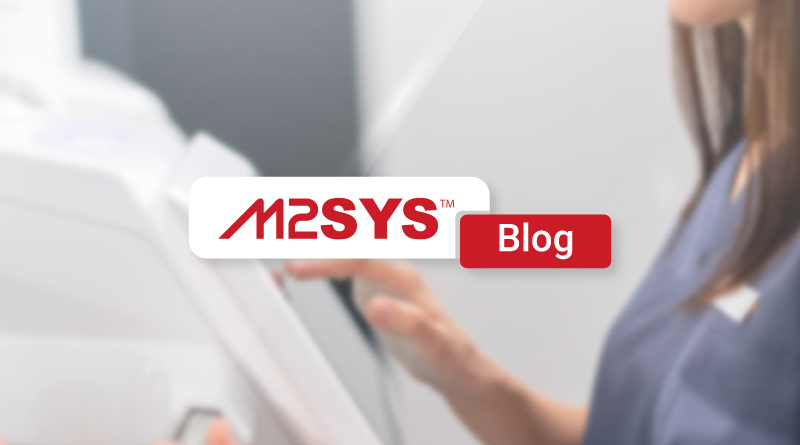Scaling AI Border Checkpoint Digitization for High-Traffic International Hubs
Scaling AI border checkpoint digitization transforms chaotic international hubs into efficient operations. By predicting peak traffic and using real-time data, AI reduces delays and enhances security. Successful examples include Dubai and Los Angeles, where AI systems streamline processes and improve threat detection.
TL;DR
- High-traffic international hubs face delays and security gaps due to outdated border systems.
- AI digitization can transform chaotic checkpoints into efficient operations, handling high volumes without compromising safety.
- Traditional methods struggle with manual checks and paper processes, leading to long wait times and increased errors.
- AI predicts and manages peak traffic by analyzing patterns, improving resource allocation and risk detection.
- Real-time data processing enhances efficiency, but interoperability remains a challenge for many agencies.
- Proven examples like Dubai International Airport and the Port of Los Angeles demonstrate AI's scalability and effectiveness.
- Choosing modular AI systems ensures compliance, adaptability, and long-term growth, reducing costs and manual work.
- M2SYS offers solutions that integrate seamlessly with existing systems, enhancing border management efficiency.
Ready to enhance your border management with scalable AI solutions? Contact M2SYS today to learn more about our customizable platforms.
What happens when millions of travelers and tons of cargo flood international hubs every day, and old systems can’t keep up? High-traffic spots like major airports and seaports face constant pressure, leading to delays, security gaps, and frustrated people. But scaling AI border checkpoint digitization offers a smart way forward. It turns chaotic checkpoints into smooth operations that handle volume without sacrificing safety.
Why Do High-Volume Borders Struggle with Old Approaches?
Traditional border methods rely on manual checks and paper processes, which break down under heavy loads. For instance, during peak seasons, wait times at places like London’s Heathrow Airport can stretch to hours, costing economies billions in lost productivity. And as global travel rebounds post-pandemic, with the International Air Transport Association reporting over 4 billion passengers in 2023, these issues only grow. Agencies deal with integration hurdles between immigration, customs, and law enforcement systems, plus high costs from overtime and outdated tech. Without better tools, errors increase, and threats slip through.
How Can AI Predict and Manage Peak Traffic Flows?
AI steps in by analyzing patterns to forecast busy periods. Adaptive algorithms look at historical data, weather, and events to predict surges. Then, they allocate staff and resources on the fly. For example, Singapore’s Changi Airport uses similar tech to reroute passengers during rushes, cutting wait times by 30%. This approach not only speeds up processing but also spots risks early. However, implementing it requires systems that scale without massive overhauls, addressing common pain points like deployment delays and compliance with changing rules.
What Role Does Real-Time Data Play in Reducing Bottlenecks?
Real-time data processing lies at the heart of effective AI border checkpoint digitization. Sensors and cameras feed info into central systems, where AI flags anomalies instantly. This means officers get quick alerts on potential issues, like mismatched documents or unusual behavior. In practice, ports like Rotterdam have seen throughput rise by 25% after adopting such setups, as cargo scans happen faster and more accurately. Yet, many agencies struggle with interoperability—getting different systems to talk to each other—which leads to silos and inefficiencies.
Are There Proven Examples of Scaled AI in Action?
Look at Dubai International Airport, where biometric self-boarding gates handle over 90 million passengers yearly. They integrated modular AI that grows with demand, reducing bottlenecks and improving threat detection. Similarly, the Port of Los Angeles uses AI for cargo inspections, predicting high-risk shipments and streamlining clearances. These cases show how scalable systems boost efficiency and security. But success depends on choosing platforms that adapt to local needs, ensure data privacy, and incorporate user feedback for ongoing tweaks.
How to Choose Modular Systems for Long-Term Growth?
When selecting AI solutions, focus on modularity. These systems let you add features as needs change, avoiding full replacements. They must comply with regulations like GDPR or national security laws, and support inter-agency data sharing. Plus, building in feedback loops means the system learns from daily use, getting better over time. Government teams and contractors often face high costs here, but the right platform cuts those by simplifying setups and reducing manual work.
With over 20 years of working alongside governments worldwide, including in the United States, M2SYS brings practical know-how to these challenges. The M2SYS eGov platform helps build and deploy customized solutions for border management. It tackles integration issues by creating secure, interoperable setups that connect immigration, customs, and law enforcement seamlessly. For high-traffic hubs, it enables AI-powered custom workflows that predict peaks and process data in real time, all while keeping costs down and deployments quick.
What Makes Compliance and Customization Key to Success?
Every country has unique rules, so solutions must customize easily. AI platforms that offer no-code setups allow quick adjustments without deep tech skills. This ensures compliance and lets agencies respond to policy shifts, like new visa requirements. In turn, this builds trust and efficiency across air, land, and sea points. System integrators and vendors appreciate how such platforms reduce project delays, fostering collaboration.
Can Feedback Loops Drive Continuous Improvement?
Yes, and they are essential. By gathering data from operations, AI systems refine their algorithms, making predictions more accurate. This loop addresses pain points like operational costs by automating routine tasks. For example, after implementation, some hubs report 40% drops in processing times. Decision-makers gain insights that help plan for future growth, ensuring borders stay resilient amid rising global mobility.
Scaling AI border checkpoint digitization isn’t just about tech—it’s about creating systems that work for people and adapt to real demands. Platforms like M2SYS eGov make this possible by enabling governments to build secure, efficient solutions that handle today’s volumes and tomorrow’s challenges.
What challenges do high-volume borders face with traditional methods?
High-volume borders face significant challenges due to outdated methods like manual checks and paper-based processes. These become inefficient during peak travel times, leading to long wait times, increased costs, and higher chances of errors. For an in-depth look at modern solutions, explore our article on Securing Airports with Modern Border Management Solutions.
How does AI help manage peak traffic flows at border checkpoints?
AI manages peak traffic by predicting busy periods using historical data, weather forecasts, and event information. It dynamically allocates resources to reduce wait times and improve processing efficiency. For example, Singapore’s Changi Airport has effectively cut wait times by 30% using similar technologies.
What is the role of real-time data in AI border systems?
Real-time data is critical in AI border systems as it helps instantly flag anomalies during cargo scans and passenger processing. This enables quick responses to potential threats, reducing bottlenecks and increasing throughput. Learn more about integrating AI-driven efficiencies by reading about AI-Powered Custom Workflows.
Can AI systems be scaled for increasing global mobility?
Yes, AI systems can be scaled to adapt to growing global mobility. They offer modular solutions that expand with demand, ensuring efficient operations without the need for massive infrastructure changes. Discover the M2SYS Border Control Solution for more insights.
How important is compliance and customization in AI border management systems?
Compliance and customization are vital as they ensure that AI systems adhere to local laws and easily adapt to policy changes, fostering trust and efficiency. Platforms with no-code customization facilitate quick adjustments, enhancing flexibility across different regions.









